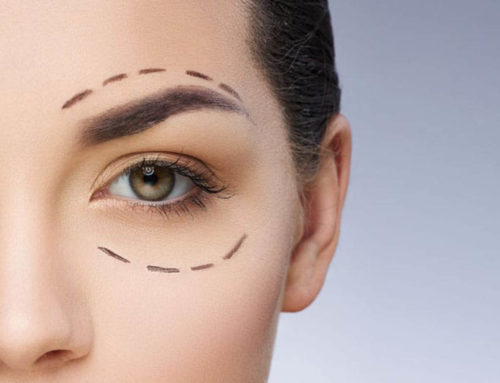Facelift surgery, also known as rhytidectomy, is a widely used cosmetic procedure that aims to enhance the appearance of aging in the face and neck region. There are various types of facelift surgeries, and it’s crucial to consult with your surgeon to determine which procedure is suitable for you. By discussing your needs and goals, your surgeon can recommend the best approach to achieve the desired outcome.

Understanding the Procedure of Facelift (Rhytidectomy)
A facelift, also called a rhytidectomy, refers to a surgical procedure that aims to address signs of aging in the face and/or neck by removing or repositioning skin, fat, and/or muscle. This procedure can address a range of aging symptoms, such as sagging skin, deep creases and wrinkles, facial fat loss, jowls, and a “double chin” caused by loose skin and excess fat in the neck.
It’s important to understand that facelifts are cosmetic restorative surgeries that can’t stop the aging process or treat superficial wrinkles, sun damage, or skin color irregularities. Moreover, facelifts are tailored to each person’s unique facial structure and desired results.
To determine the best approach, it’s essential to consult with a surgeon who can discuss the available options and recommend the most suitable treatment plan. By understanding the potential benefits and limitations of facelift surgery, individuals can make informed decisions and achieve their desired aesthetic outcomes.
Exploring the Different Types of Facelifts
Facelift surgery offers a range of options for individuals who wish to address visible signs of aging in their face and neck. The following are some of the most common types of facelift surgeries available:
Traditional Facelift:
This surgery involves incisions made around the ears, hairline, and under the chin. The surgeon then tightens the underlying structures, removes excess fat, and trims excess skin before repositioning it for a natural look. It is recommended for people who want significant improvement in moderate to severe facial aging.
SMAS Facelift:
This variation of the traditional facelift targets the lower two-thirds of the face. The surgeon tightens the muscular layer of the face and trims excess skin and/or fat in the cheeks and lower face.
Deep Plane Facelift:
This surgery involves lifting the muscular layer, fat, and skin as a single unit. It addresses multiple areas of the face simultaneously.
Mid-Facelift:
This surgery focuses on the cheek area of the face. The surgeon repositions the fat and tightens the skin in the cheek area.
Mini-Facelift:
A less invasive surgery, the mini-facelift is recommended for younger people with early signs of facial sagging. It focuses on lifting the lower face and neck area.
Cutaneous Facelift:
This surgery involves only the skin and usually focuses on the neck and lower face.
The choice of the type of facelift surgery depends on the individual’s specific needs and desired outcomes. It’s important to discuss with a surgeon to determine the most appropriate option for achieving the desired aesthetic results.

Are you eligible for Facelift Surgery
Facelift surgery is a cosmetic procedure that can help individuals achieve a more youthful appearance. Here are some general criteria for determining whether someone is a good candidate for the surgery:
Physical health: A person must be physically healthy and not have any medical conditions that could impede their ability to heal properly after the surgery.
Non-smoker: Smoking can affect the body’s healing process and increase the risk of complications, so individuals who smoke are generally not good candidates for facelift surgery.
Realistic expectations: Individuals must have realistic expectations about the outcome of the surgery and understand that facelifts cannot stop the aging process altogether.
Skin elasticity: The ideal candidates for facelift surgery are individuals who have signs of facial aging but still have some skin elasticity. Generally, people in their 40s to 60s are good candidates, although younger and older individuals can also be considered.
In summary, facelift surgery is a personal decision that should be made after careful consideration and consultation with a qualified surgeon. The surgeon can assess an individual’s medical history, skin elasticity, and overall health to determine whether they are a good candidate for the procedure.
Facelift Consultation: What to Expect
If you’re considering a facelift, it’s essential to have an initial consultation with your plastic surgeon to discuss your individual goals and needs. During the consultation, you and your surgeon will cover a range of topics, including:
- Your desired outcomes for the facelift surgery.
- Any pre-existing medical conditions, allergies, or treatments.
- Your current use of medication, vitamins, supplements, alcohol, tobacco, and drugs.
- Your surgical history.
During the consultation, your surgeon will also:
- Evaluate your overall physical health.
- Assess your psychological and emotional well-being.
- Discuss the different types of facelift procedures.
- Examine your face and neck, measure your features, and take clinical photographs (with your consent) to aid in surgical planning.
- Recommend specific facelift procedures.
- Discuss the potential outcomes of the surgery and any associated risks or complications.
- Recommend the type of anesthesia that will be used during the procedure.
How to Prepare for Facelift Surgery: Tips and Recommendations
Before your facelift surgery, your surgeon will provide you with several instructions to ensure you have a smooth and successful procedure. Here are some typical preparations you may need to make before undergoing a facelift surgery:
Medical evaluation and testing:
You may need to undergo a thorough medical evaluation and blood tests before the surgery to ensure you are healthy enough to undergo anesthesia and surgery.
Medication management:
Your surgeon may recommend that you stop taking certain medications, such as blood thinners, for a few weeks before your surgery. They may also prescribe medications to take before or after the surgery to help you manage pain or prevent infection.
Skin care:
You may need to use certain products or avoid certain skincare products in the weeks leading up to the surgery.
Lifestyle changes:
Your surgeon may recommend that you stop smoking, avoid certain foods or beverages, and abstain from recreational drugs in the weeks leading up to your surgery.
Preparing for recovery:
You will need to arrange for someone to drive you home after your surgery and stay with you for the first few days of your recovery. You may also need to take several days or weeks off from work depending on the type of facelift surgery you are undergoing.
It is crucial to follow all the instructions provided by your surgeon before and after the surgery to ensure the best possible results and a smooth recovery.
Facelift Recovery: What to Expect
Following a facelift surgery, it is normal to experience swelling and bruising, which typically subsides within two to three weeks. The recovery period varies from person to person, with some healing faster than others. Although you may feel hesitant to go out in public during the early stages of recovery, you should start feeling better within the first few days after the surgery.
Usually, the bandages are removed a few days after the surgery, and you will have to visit your surgeon several times over the next two to three weeks. During these visits, your surgeon will monitor your bruising and swelling and remove your stitches.
The duration of recovery from a facelift is influenced by the type of surgery performed and your general well-being. While bruising and swelling are common for a few weeks, it may take up to two or three months for your face to fully recuperate and return to its pre-surgery state.
Considering a Facelift? Here’s a Note from IstanBest Clinic
If you’re considering a facelift, it’s crucial to remember that it’s a major cosmetic surgery with certain risks involved. Before undergoing the procedure, you must ensure that you’re in good physical and mental health. Choosing a board-certified plastic surgeon and discussing your goals, concerns, and expectations is essential to achieve the best results.
While facelifts are common and have high satisfaction rates, it’s important to consider all the possible risks and complications. Your surgeon will help you decide on the most suitable type of surgery based on your needs, desires, and overall health.




